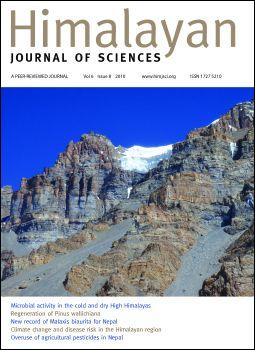Simulating farm income under the current soil management regime in the mid-hills of Nepal
DOI:
https://doi.org/10.3126/hjs.v6i8.3243Keywords:
Mid hills, Nepal, Spatial modeling, Soil quality index, Farm incomeAbstract
Farmers in the mid-hills of Nepal follow diverse farming systems. The peri-urban area of this region, where population density is higher, faces several problems in farming. While hills suffer from erosion because they are erodible, the peri-urban areas face the problem of decline in factor productivity, particularly in intensively cultivated farmlands. The present study is concerned with simulating farm income on a regional scale based on soil management practices. Spatial explicit simulation shows that the loss of farm income due to degradation is substantially higher in hills while it is lower in valley bottoms. Strategy formulation and testing in the spatial environment indicates that Geographic Information System is an appropriate methodological tool for simulating the consequences of particular interventions.
Key words: Mid hills, Nepal, spatial modeling, soil quality index, farm income
DOI: http://dx.doi.org/10.3126/hjs.v6i8.3243
Himalayan Journal of Sciences Vol.6 Issue 8 2010 pp.27-34
Downloads
755
1056




